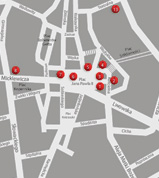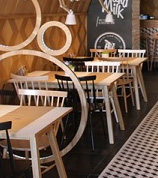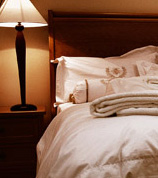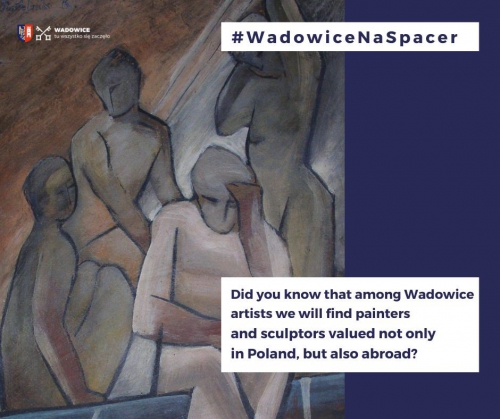
#WadowiceNaSpacer – A Walk in the footsteps of Wadowice artists
This time we encourage you to head into town in the footsteps of Wadowice artists. Did you know that among them you will find painters and sculptors valued not only in Poland, but also abroad? In our proposal you will learn about interesting places, people and stories that create an interesting picture of the community of Wadowice artists - sculptors and painters.
A google map prepared by us will help you prepare the route of the walk: https://www.google.com/maps/d/viewer?mid=1_vw--XG_OJRTMEOcTmv03uaXy2looGw&fbclid=IwAR3GvXUwaCqTmz0zp8sItTt72b3LrNhVYY04yL9NYNizNo6sqq0MiF88Z2w&ll=49.870481672996284%2C19.496213900000015&z=14
- The former house of Karol Pustelnik – ul. Iwańskiego 38
Karol Pustelnik (1918 - 2010) was a painter, restorer, and collaborator of Tadeusz Kantor. He was born in 1918 in Frydrychowice near Wadowice. From an early age, he was passionate about drawing and painting. Before the Second World War, he was friends with the younger generation of Wadowice artists such as W. Bałys, P. Suknarowski, R. Brańka, and K. Wojtyła. He came into contact with the environment of the Gorzeń "Czartak", where he met, among others, the novelist and poet E. Zegadłowicz. Between 1937 and 1939 he studied at the State Institute of Fine Arts in Kraków, where he graduated. During the Nazi German occupation, before being sent to Germany for forced labor, he worked on polychromy in a church in Frydrychowice. In 1952, he graduated from the Conservation Department of the Academy of Fine Arts in Kraków. Among his lecturers was the versatile artist T. Kantor. From 1957, Pustelnik was a member of the "II Grupa Krakowska", with which he bound his artistic path. Nevertheless, he remained an individualist, distancing himself from the big city, and creating in his hometown, closer to nature. By training, Karol was a restorer of art monuments, especially sacred ones. He worked on polychromes, paintings, and feretories in churches in Małopolska, Świętokrzyskie, and Podkarpackie. His works in Wadowice include the gilding of the altar in the Basilica of the Presentation of the Blessed Virgin Mary, works for the Pallottine Fathers on Kopiec (on the mound), for the Sisters of the Holy Family of Nazareth and the Carmelite Fathers "na górce" (on the hill). For the artist, the preservation of monuments was a source of livelihood, but he was first and foremost a painter, and painting was his passion. He was original and unique in his work. His style can be characterized as dynamic, full of color and richness, magical and imaginative figures. Among the painting techniques used by Pustelnik are watercolor, oil, tempera, and collage. His works can be found in museum collections in Kraków, Warszawa, Szczecin, and Wadowice, among others, as well as in private collections. Karol Pustelnik died in 2010 at the age of 92. He was buried in the communal cemetery in Wadowice.
.jpg)
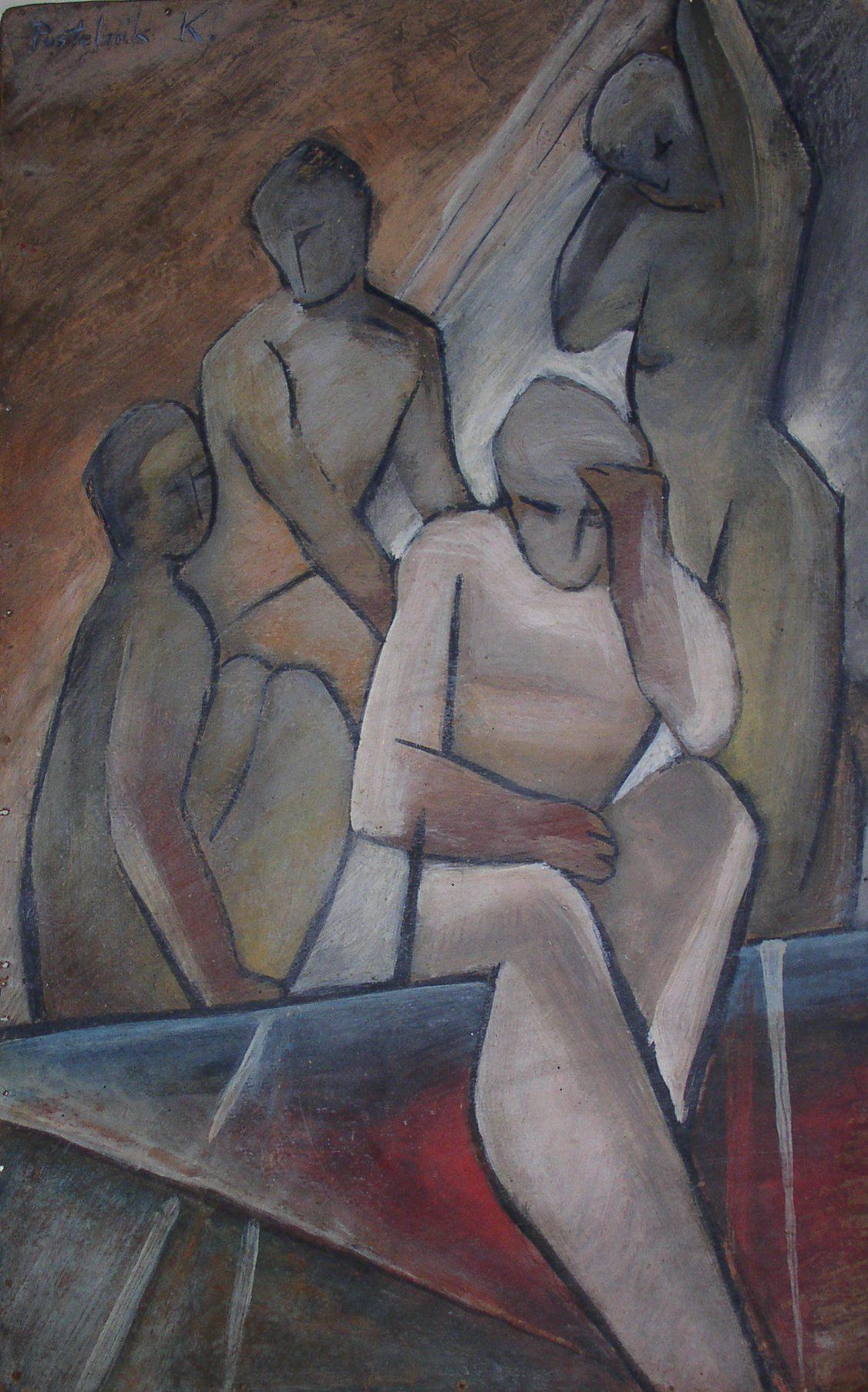
Photo: Young Karol Pustelnik from FB page Karol Pustelnik - artysta malarz, konserwator zabytków (1918 - 2010); painting „Kobieta” by Karol Pustelnik.
- Former men’s gymnasium building, ul. Mickiewicza 16
Ludwik Jach Senior (1892 – 1952) was a painter and pedagogue. He was born and grew up in Kraków, where he also received his education. From 1912 he studied at the Academy of Fine Arts in Kraków. His studies were interrupted during World War I due to his service in the Austrian army, and he graduated in 1919. He later became a teacher of drawing and handicrafts at a men's gymnasium in Wadowice. In 1926 he moved there with his family and took a job at the Carmelite Gymnasium and the Marianum Collegium. He was the artistic director of "Lutnia szkolna", the magazine of the Wadowice Gymnasium. He taught Karol Wojtyła for six years. Among his students, he promoted technical innovations, and taught them how to build their own canoes, but also conducted model-building courses and organized open-air competitions for the constructors of the best airplane and glider models. Since 1933 Jach was connected with the art circle "Czartak II". He painted all his life. He painted local landscapes, portraits, images of saints, still lifes, and postcards. He left mainly oil paintings and watercolors. His paintings were characterized by the truth of the subject, realism, in watercolors and landscapes with light tones, while in portraits by classical brown and black. He was commissioned by the parish church in Osiek to paint the Stations of the Cross. He exhibited his paintings in Kraków and Wadowice. He made many artistic trips, for example to Italy and Bulgaria. During the occupation he gave secret education in Wadowice. After the war he organized a high school, of which he was the director for a short time. Today his works are in the Wadowice Town Museum and in private collections. He died in Wadowice on the 26th of June, 1952 and is buried in the local parish cemetery.
- Former studio of painter Felicja Świtalska ul. Słowackiego 18
Felicja Świtalska (1902 – 1981) was a painter who spoke fluent French, German, and English. She was born in 1902 in Wadowice in the family of Adolf Kinst. All her life she was connected with her hometown. However, due to her father's service in the Austrian army and the resulting changes in the location of his garrison, she completed her elementary school in Hungary and her gymnasium in Vienna. She was a student at the "Hernals" Institute (probably referring to the Educational Institute for Officers' Daughters in Vienna Hernals), where she took a course in painting and drawing. She studied painting under Prof. A. Kunzfeld. She also studied painting in Lviv. An exhibition of her works in 1937 is considered the beginning of Felicia's artistic activity. During the occupation in Wadowice, she took part in secret education. Since 1945 she taught foreign languages (French, English, and German) in Wadowice High Schools. In the years 1945-48, 1967/68 she was a professor of French at the Wadowice High School and Gymnasium, and in the years 1948-50 at the Vocational School. She also taught at the "Collegium Marianum" on Kopiec (on the mound) with the Pallottine priests. From 1953-57 she worked as the director of the common room at the Economic Technical School. The artist had her studio in Wadowice in a building at ul. Słowackiego 18. Since 1946 Felicia was a member of the Union of Polish Artists. After World War II, she was also a member of the artistic and literary group "Czartak II", which was ideologically related to the pre-war group "Czartak" by E. Zegadłowicz. Among the members of "Czartak II" we find J. Jura, M. Kręcioch, L. Jach jr., K. Pustelnik and Fr. Suknarowski. Świtalska mainly painted still lifes with colorful flower motifs, portraits, and landscapes. She used both oils and pastels. Toward the end of her life, she lost her eyesight. She died in Wadowice at the age of 79 and was buried in the local parish cemetery.
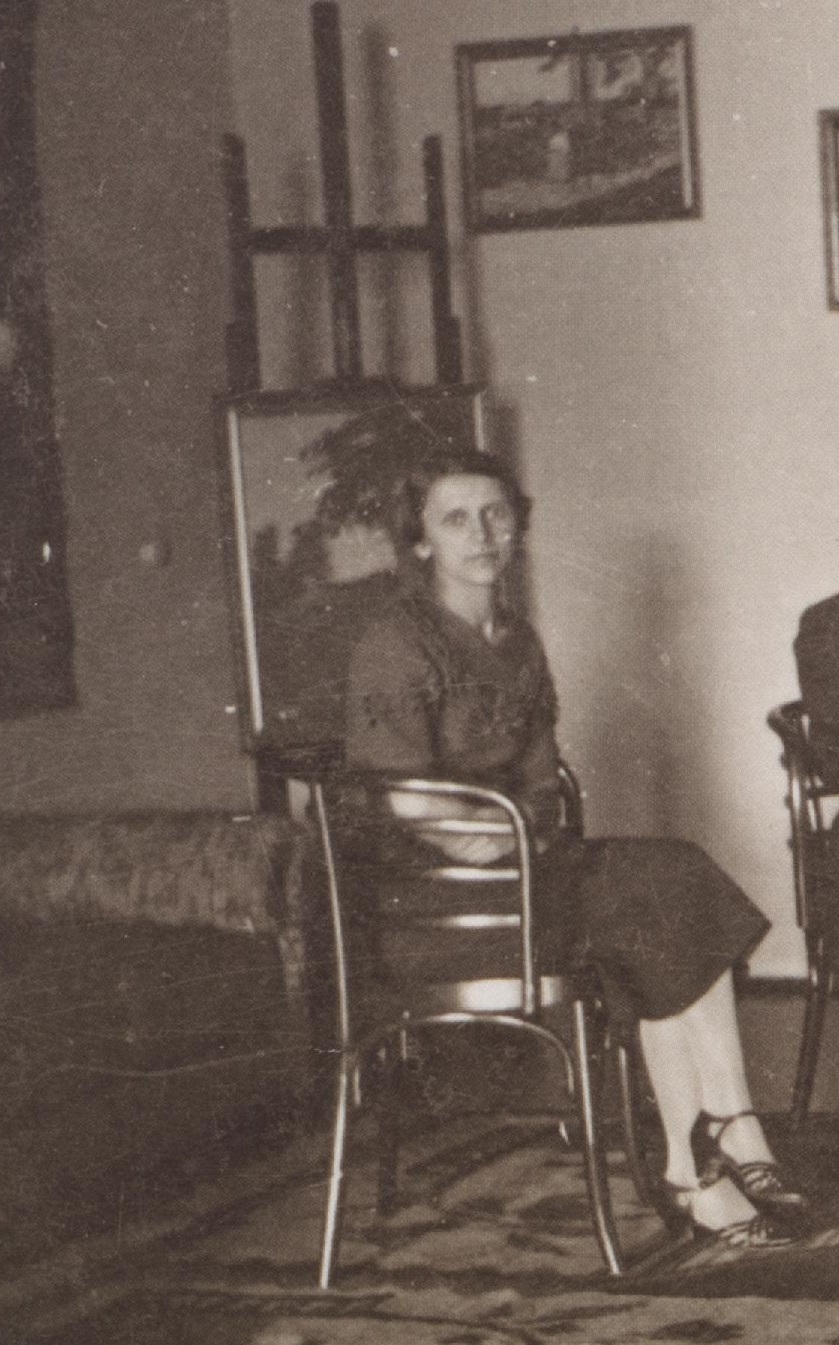
Photo: Fragment of the photograph “Pracownia malarki Felicji Midloch-Świtalskiej”, ca. 1935, collection “Pamiątka z Wadowic Dawnych”, owned by P. and S. Kulig from the collection of the Municipal Museum in Wadowice
- Gallery of Franciszek Suknarowski ul. Karmelicka 61
Franciszek Suknarowski (1912 – 1998). Sculptor, painter, member of the group "Czartak II", co-founder of the creative clubs "Beskidy" and "Beskidnicy". He was born in Wadowice in the family of a ropemaker Franciszek. He graduated from a seven-class school and a vocational school. During his studies he worked as a part-timer in the sculpture and stonemasonry workshop of Józef Jura. He studied at the Academy of Fine Arts in Kraków under the guidance of professors K. Dunikowski and K. Sichulski. While still a student, he joined the "Czartak II" Art Circle in Wadowice. He exhibited his works for the first time in 1933 on the occasion of E. Zegadłowicz's jubilee. At the end of the 1930s, he opened a sculpture and stonemasonry workshop in Wadowice at ul. Tatrzańska (now ul. Matki Bożej Fatimskiej). During World War II he was sentenced to forced labor in Imielin and Auschwitz. After the war, Suknarowski became involved in education, among other things, he was a teacher at a high school in Wadowice. He was also an animator of local artistic life: he reactivated the group "Czartak II" and co-founded the creative work clubs "Beskidy" and "Beskidnicy". He did not neglect his own artistic work and created numerous sculptures. An equally important artistic field for him was easel painting. Apart from sculptures (especially stone sculptures), oil and watercolor paintings (mainly Beskid landscapes, still lifes and portraits), he also made graphics, drawings, mosaics, medals and collages. His works can be seen in the author's gallery in Wadowice, ul. Karmelicka 61, in the Town Museum in Wadowice, in the District Museum in Bielsko-Biała, in the Museum of Medal Making in Wrocław and in private collections in Poland and abroad. He died in 1998 and is buried in the parish cemetery in Wadowice.
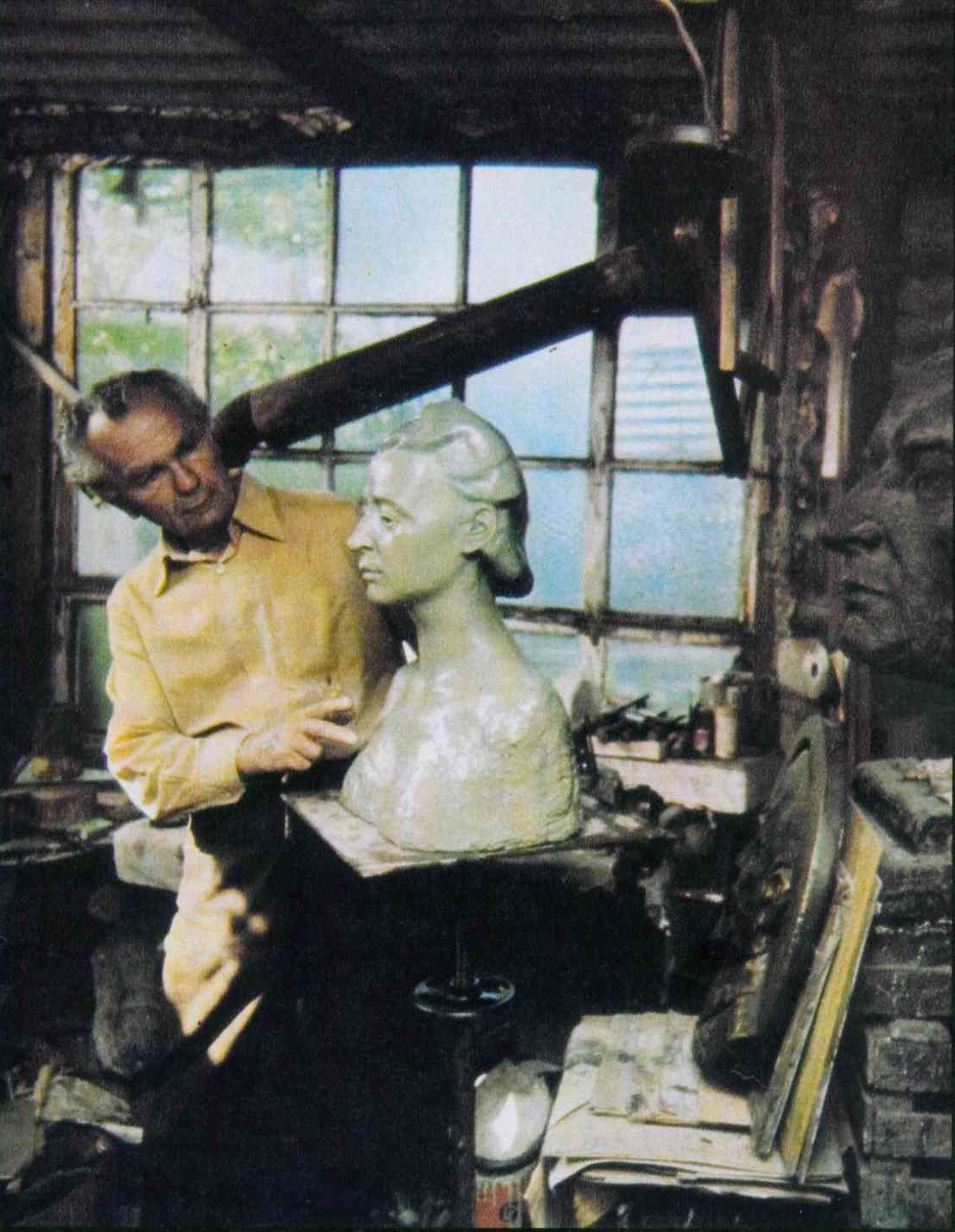
Photo: Franciszek Suknarowski in his study – from “Album o twórczości Franciszka Suknarowskiego – wadowickiego artysty rzeźbiarza i malarza”
- Wadowice Cultural Center ul. Teatralna 1
Krystyna Sowińska (1952 – 2010). She was a painter, art educator, and teacher. She was born in London in 1952. Since 1959 she lived in Wadowice and connected her life and work with the town. In 1972, after graduating from the Art School in Tarnów with a degree in artistic weaving and painting, she joined the art group “Beskidnicy”. She became one of its most active members. At the beginning of the 1970s she participated in the Saturday-Sunday “Galeria na murze” in ul. Kościelna. At that time she became known as a creative and talented artist. She co-organized open-air art workshops in Bielsko-Biała, Ponikiew, Mucharz, Mszana Dolna, Maków Podhalański and Zawoja. In Wadowice she took part in various activities. She took part in the preparation of “Dni Wadowic” (Days of Wadowice). She run a gallery “Wieczór 262 SYLWETKI jednego dzieła” in the club “Piguła” From 1978 there was a gallery and an art studio on the corner of ul. Poprzeczna and ul. E. Zegadłowicza, in which Krystyna participated. Nearby was the "Beskidnicy" Club, whose committee evaluated artists who wanted to join the group. Apart from Fr. Suknarowski, Sowińska was also a member of this committee. She took part in all the collective exhibitions of the WKPT and several dozen open-air exhibitions in Poland and abroad. As a graphic designer she was one of the illustrators of the series "Biblioteka Nadskawia" published in 1982 - 1988. In 1998-2005 she was the president of WKPT "Beskidnicy". In the 70's Krystyna worked in "Łabędy". She developed her artistic skills while working as an art teacher at the Wadowice House of Culture and as a teacher at the Primary School No. 1 (now Primary School No. 2). She had a close relationship with young people, preparing them privately for competitions and exams at art schools. Her works were also presented at individual exhibitions in the cities of Małopolska and Śląsk, as well as in France and Italy. She often used her works as gifts on various occasions. She was inspired by nature. She used various artistic techniques - from watercolors and gouache, through figurative and decorative painting, graphics, tempera, to oil. In Sowińska's works one can find both realism and symbolism, as well as fantasy. The artist cannot be attributed to a particular form or technique because she was an individualist. She also presented her works at the exhibitions of the Wadowice Artistic Circle, organized by the Wadowice Cultural Center. The next edition in 2010 commemorated her contribution to the creative work and education of the following generations of artists. She died in 2010 and was buried in the parish cemetery in Wadowice.
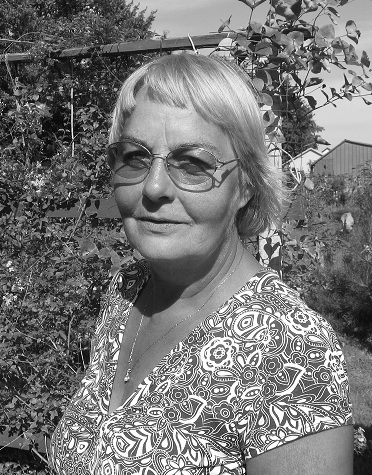
Photo from a website about the artist - www.krystynasowinska.com
- Former ceramic workshop and studio of the sculptor Józef Jura (ul. Chopina 26 – no longer exists)
Józef Jura (1889 – 1978) – artist, sculptor, owner of the Tile Production Workshop. He was born in Kęty in the family of a stonemason, Józef, who moved with his family to Wadowice, where he established a concrete mixing plant producing concrete, tiles and concrete pipes. From an early age, Jura showed a special interest in art. As a teenager he visited Paris and Venice. He then studied at a sculpture school in Val Gardena, Italy. As a young man, he attended the Academy of Fine Arts in Kraków, where he was a student of Konstanty Laszczka. At the time, he was considered one of the most talented students. During his stay in Rome in 1925, he organized a space presenting the works of Polish artists during the 3rd Biennale. After returning to Poland, he settled permanently in Wadowice, where he began to run his father's concrete mixing plant, which he renamed "Zakład Artystyczny Rzeźbiarski Budowy Ołtarzy i Pomników", located at ul. Młyńska (today ul. Chopina). In the same place he started the company "Wytwórnia Kafli Szamotowych i Ceramiki Artystyczny", where he produced, dried and fired tiles designed by himself. There was also a workshop near the Jura concrete plant in Wadowice, which was also visited by W. Bałys and Fr. Suknarowski. He presented his works at exhibitions organized in Wadowice, Andrychów, Kraków and Zakopane. In 1936 he married Aniela Suknarowska, with whom he had four children. A large family required the expansion of activities, and therefore a tile shop was established next to the stonemason's workshop. In the twenties and thirties of the last century Jura was artistically connected with the milieu of the artistic group "Czartak II". During the war, the property of the Jura family was confiscated by the occupation authorities and given to a German resettled person. Due to his knowledge and experience, the new owner made Jura the director of the tile production workshop, and thanks to his position in the company, he hired students for ordinary work, saving them from deportation to forced labor. After the war, he helped the poorest students in local schools. The last years of his life were a particularly difficult time for the artist. He struggled with his own health problems, surgeries, and most of all, caring for his terminally ill wife, Aniela. He died in Wadowice in 1978 at the age of 89. He was buried in the parish cemetery in Wadowice in a grave designed by himself. The main customers of Józef Jura were churches. For them he made wooden altars, statues and stone monuments. You can still see his works nowadays in Wadowice.
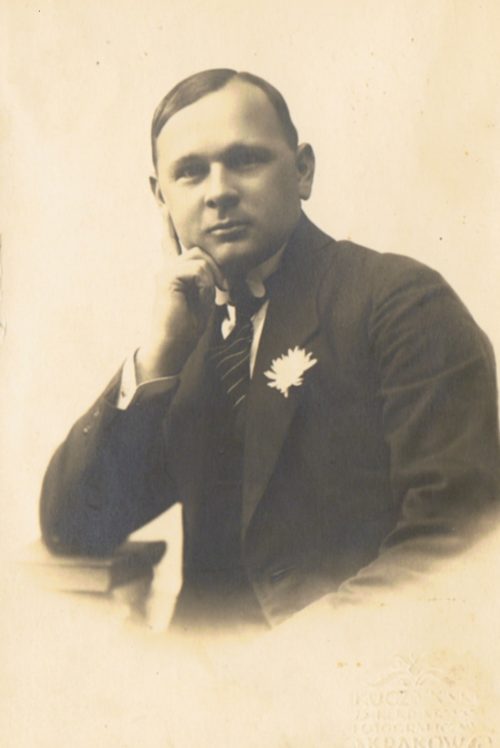
Photo: Józef Jura, from the collection of the Municipal Museum in Wadowice
- The manor house of Emil Zegadłowicz, Gorzeń Górny, ul. Krajobrazowa 1
Jędrzej Wowro (1864 - 1937) was a folk sculptor and a sculptor of saints. His real name was Andrzej Wawro. This "artistic pseudonym", based on the local dialect, was popularized by the discoverer and popularizer of his work - the writer Emil Zegadłowicz. He was born in Gorzeń Dolny near Wadowice as one of nine children in a peasant family. From childhood he worked on the land without attending school. In his life he had different jobs: He worked as a miner in the coal mines (where he suffered serious accidents underground), as a worker in a paper mill, as a lumberjack, and as a gravedigger's assistant. However, it was his hobby and talent for carving with a clasp knife that brought him fame and money. Jędrzej covered the figures of the Pensive Christ, the Holy Family, saints and angels, as well as candlesticks and chandeliers with bright polychrome. He worked as a miner in the coal mines (where he suffered serious accidents underground), as a worker in a paper mill, as a lumberjack, and as a gravedigger's assistant. However, it was his hobby and talent for carving with a clasp knife that brought him fame and money. Jędrzej covered the figures of the Pensive Christ, the Holy Family, saints and angels, as well as candlesticks and chandeliers with bright polychrome. He sold his works at local markets and fairs. In 1935 he took part in the State Harvest Festival in Spała, where he presented his works to President Ignacy Mościcki. He died in 1937 in his native Gorzeń Dolny and was buried in the parish cemetery in Wadowice. The works of the master sculptor can still be admired in the Town Museum in Wadowice, in the Museum of the Family Home of the Holy Father John Paul II in Wadowice, in the Town Museum in Sucha Beskidzka and in many private collections.
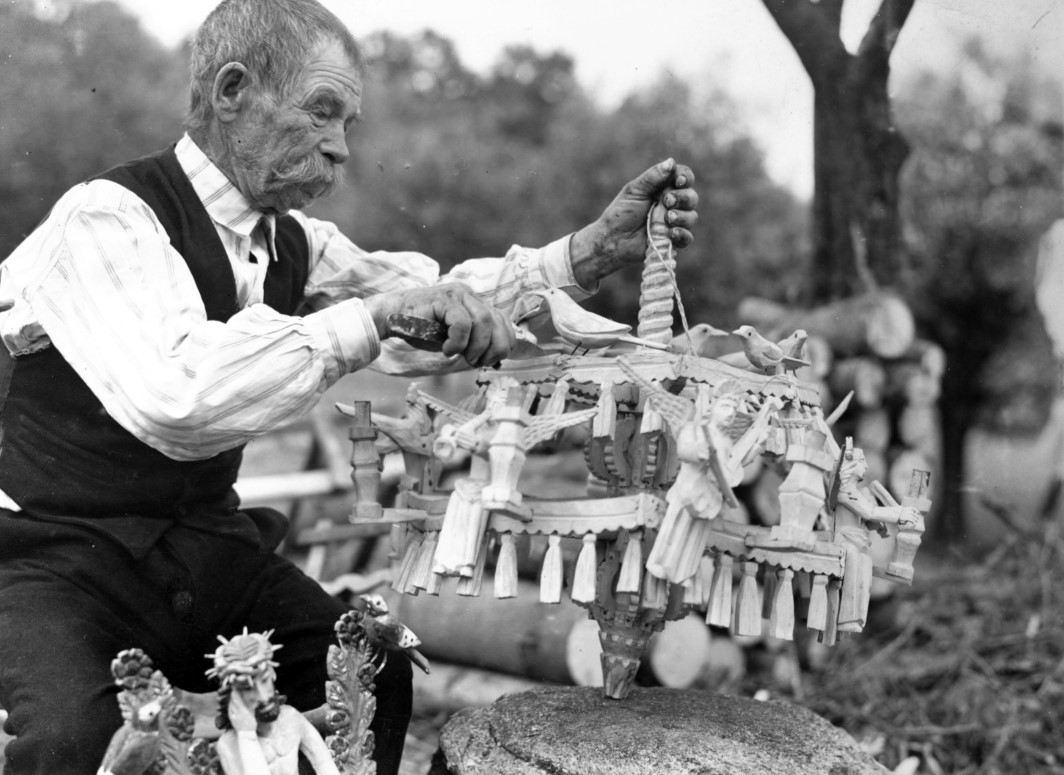
Photo from the collection of the National Digital Archives: Folk sculptor Jędrzej Wawro at work on a candlestick depicting an angel band. At the bottom left, a fragment of the Pensive Christ sculpture, Gorzeń Dolny, 1939.

.png)
